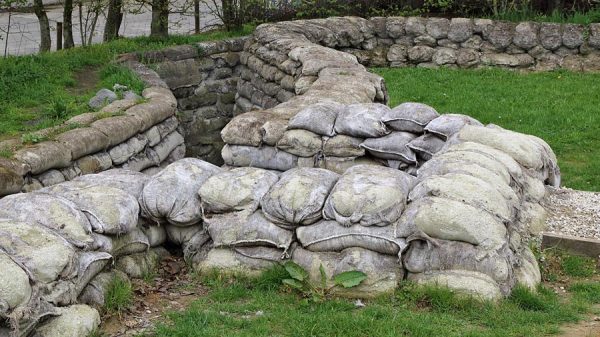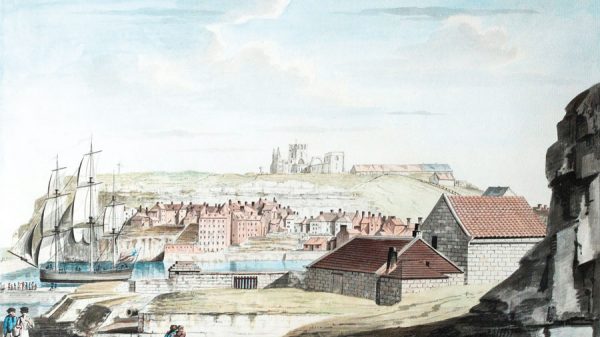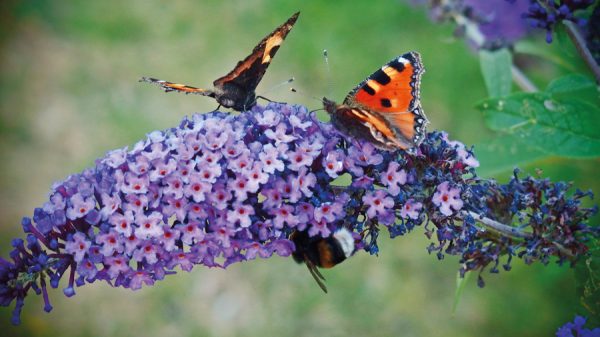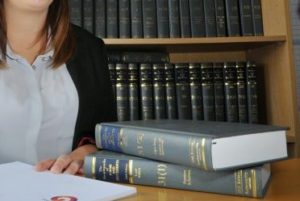The Chinese New Year starts on the 19th February bringing in the year of the goat/sheep. Of course this is a highly important festival for the Chinese community and there is plenty going on in Leeds for you to get into the spirit of things and celebrate too.
A great family event “Make and Take” is taking place at Temple Newsam on the 14th and 15th February 11:00 am -12:30pm and 17th to 19th February 1:30 -3:30pm. Families can explore the Chinese Collections, handle objects and get crafty with these Chinese Crafts sessions. Free to take part, but normal admission charges apply. Contact 0113 3367460 for more information.
Leeds City Museum is holding a study day on 19th February titled Leeds Chinese Collections and the Chinese Zodiac. This is a chance to explore and even handle some of the 6000 objects held in the Chinese Collection, including stunning porcelain pieces. Led by the Curator of World Cultures Antonia Lovelace, tickets are priced at £10 which includes lunch. This is an adult only event. Booking is essential, contact 0113 2243732
The Leeds Chinese Community Association organise a Festival for all the family at the Leeds Town Hall. This is a fantastic event with theatre performances of dance, music, Kung Fu, Tai Chi, and Chinese Calligraphy. There are also stalls selling a variety of crafts, face painting and food, and sports and workshops to take part in. This year’s event is on Sunday 22nd February from 11am to 3pm, with tickets priced at £3.50. For enquiries, contact Tel: 0113 2346019 email:lcca@lcca-uk.org
With all this going on in the city, we thought we would take a look at the history and traditions of the Chinese New Year:
History
Chinese New Year is centuries old stemming from myths and traditions. Traditionally the festival was a time to honour deities and ancestors. The beginning of the Chinese New Year, according to tales and legends, started with a mythical beast. This beast called the Nian would arrive on the first day of New Year to eat crops, livestock, and even children and other villagers. The villagers would protect themselves by putting food outside their door at the beginning of the New Year so that Nian would eat that and not attack people. One day a god visited a villager and told him to put red paper and firecrackers outside his house for protection. The villagers then understood that Nian was terrified by the colour red and then started to hang red lanterns and scrolls on windows and doors when New Year was upon them, as well as setting off firecrackers to frighten Nian away. He never came to the village again and was eventually captured by an ancient Taoist monk.
Zodiac
The Chinese New Year, also known as the Spring Festival, is the longest festival in the Chinese calendar, lasting from the last day of the one year in the calendar, to the Lantern Festival which is on the 15th day of the first month of the next year. This calendar is lunisolar, so falls on different dates each year – between January 21st and February 20th in the Gregorian calendar. Each year, there is a presiding animal from the zodiac of 12. Alongside this cycle is a ten year cycle of heavenly stems in which wood, fire, earth, metal and water rotate every two years. A Yin and Yang association alternates every year, creating for example Yang Wood, Yin Wood, Yang Fire, Yin Fire etc. This means that a cycle of exactly the same combination repeats every 60 years.
2015 is the year of the Goat/Sheep which is the 8th sign in the Chinese Zodiac. Each sign has related personality traits, lucky colours, numbers, flowers etc. Here is a brief introduction to each:
Goat – years 1919, 1931, 1943, 1955, 1967, 1979, 1991, 2003, 2015
Personality: Calm, gentle, creative, thoughtful, amicable, persevering, frank and honest.
Colours: Brown, red, purple
Numbers: 2 and 7
Monkey – years 1920, 1932, 1944, 1956, 1968, 1980, 1992, 2004,
Personality: smart, quick-witted, frank, optimistic, ambitious and adventurous
Colours: white, blue, gold
Numbers: 4 and 9
Rooster – years 1921, 1933, 1945, 1957, 1969, 1981, 1993, 2005
Personality: Observant, hardworking, confident, courageous, talent, frank and honest
Colours: Gold, brown, yellow
Numbers: 5, 7 and 8
Dog – years 1922, 1934, 1946, 1958, 1970, 1982, 1994, 2006
Personality: Loyal, honest, amiable, kind, cautious and prudent
Colours: green, red, purple
Numbers: 3, 4 and 8
Pig – years 1923, 1935, 1947, 1959, 1971, 1983, 1995, 2007
Personality: diligent, sympathetic, generous, sincere and affectionate
Colours: yellow, grey, brown, gold
Numbers: 2, 5 and 8
Rat – years 1912, 1924, 1936, 1948, 1960, 1972, 1984, 1996, 2008
Personality: quick-witted, resourceful, versatile, intuitive, imaginative and curious
Colours: blue, gold, green
Numbers: 2 and 3
Ox – years 1913, 1925, 1937, 1949, 1961, 1973, 1985, 1997, 2009
Personality: diligent, reliable, honest, determined and ambitious
Colours: blue, yellow, green
Numbers: 1 and 4
Tiger – years 1914, 1926, 1938, 1950, 1962, 1974, 1986, 1998, 2010
Personality: brave, confident, adventurous, expansive, open and independent
Colours: blue, grey, orange
Numbers: 1, 3 and 4
Rabbit – years 1915, 1927, 1939, 1951, 1963, 1975, 1987, 1999, 2011
Personality: gentle, quiet, elegant, alert, kind, patient and responsible
Colours: red, pink, purple, blue
Numbers: 3, 4 and 9
Dragon – years 1916, 1928, 1940, 1952, 1964, 1976, 1988, 2000, 2012
Personality: enthusiastic, confident, intelligent, ambitious, hardworking and straightforward
Colours: gold, silver, greyish white
Numbers: 1, 6 and 7
Snake – years 1917, 1929, 1941, 1953, 1965, 1977, 1989, 2001, 2013
Personality: intelligent, wise, materialistic, calm, courageous, lively and communicative
Colours: black, red and yellow
Numbers: 2, 8 and 9
Horse – years 1918, 1930, 1942, 1954, 1966, 1978, 1990, 2002, 2014
Personality: active, energetic, kind, rational, optimistic, sentimental and straightforward
Colours: yellow and green
Numbers: 2, 3 and 7
If your birthday is in January or February it is worth remembering that these zodiac animals begin at the start of each Chinese New Year, not the 1st January so you might actually be a different animal to the year listed. For example, if you were born in January 1969, the year of the rooster did not start until 17th February that year, so you would fall into the year of the monkey 1968.
Tradition and Celebration
There are many traditional celebrations that take place not only during the festival but the weeks preceding it too. On the eighth day of the lunar month before Chinese New Year, a traditional porridge called Laba porridge is served in remembrance of La, an ancient festival that occurred after the winter solstice. Traditionally, the women of the household would prepare the porridge at first light and the first bowl would be offered to the family’s ancestors and deities before each member of the family were served. This is still served as a special breakfast in some Chinese homes. This ‘La month’ is similar to Advent in Christianity.
On the days just before the New Year, Chinese families clean their home thoroughly as it is believed that cleaning sweeps away the bad luck of the previous year and makes the home ready to receive good luck. Some people also give their doors and window frames a fresh coat of red paint during this time too.
Haircuts need to be done before New Year as it is considered bad luck to have your hair cut during celebrations. New clothes and shoes can also be purchased to symbolise a new start. Another thing that must be done before New Year’s eve is for businesses to pay off any outstanding debts from the year before, and to extend debts of gratitude such as sending gifts and rice to close business associates.
New Year’s Eve in the Chinese calendar is when the Reunion Dinner or “Nian Ye Fan” takes place. This is a large sumptuous meal including a fish dish, and also depending on the region of China, it is customary to make dumplings or a New Year Cake.
The first day of Chinese New Year is a time to visit and honour the eldest members of the family – parents, grandparents and great grandparents. Some families invite lion dance troupes to usher in the New Year and evict bad spirits. Red envelopes containing cash are also given to younger members of the family. This money should be given in even numbers.
The second day was traditionally a time for married daughters to visit their parents, as they didn’t have many opportunities to do so frequently. Some believe this day to also be the birthday of all dogs, and remember them with special treats.
Each day in the festival has its own traditional meanings and customs, ending with the Lantern Festival on the fifteenth day. Candles are lit outside houses which is to guide wayward spirits home, and families parade down the streets with lighted lanterns.
However you celebrate, the Yorkshire Reporter wishes everyone a Happy Chinese New Year 2015!







